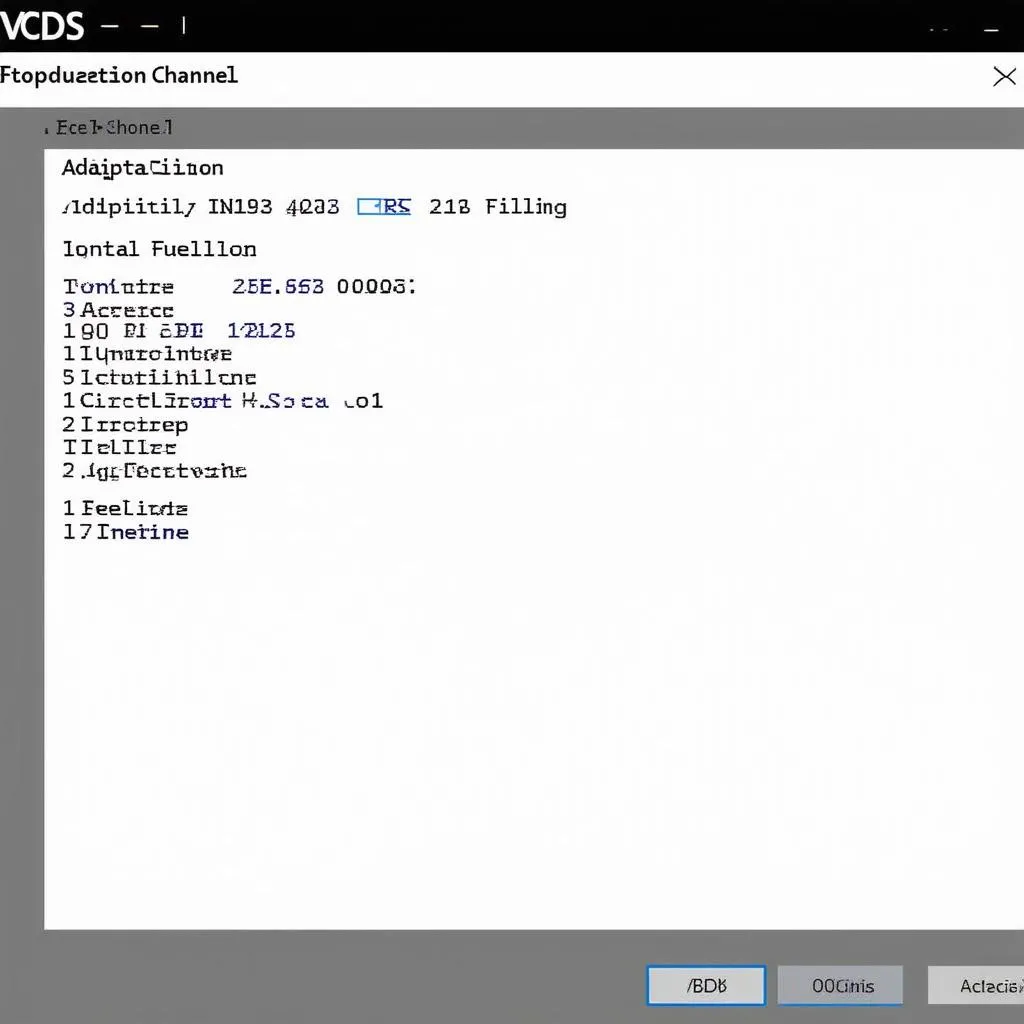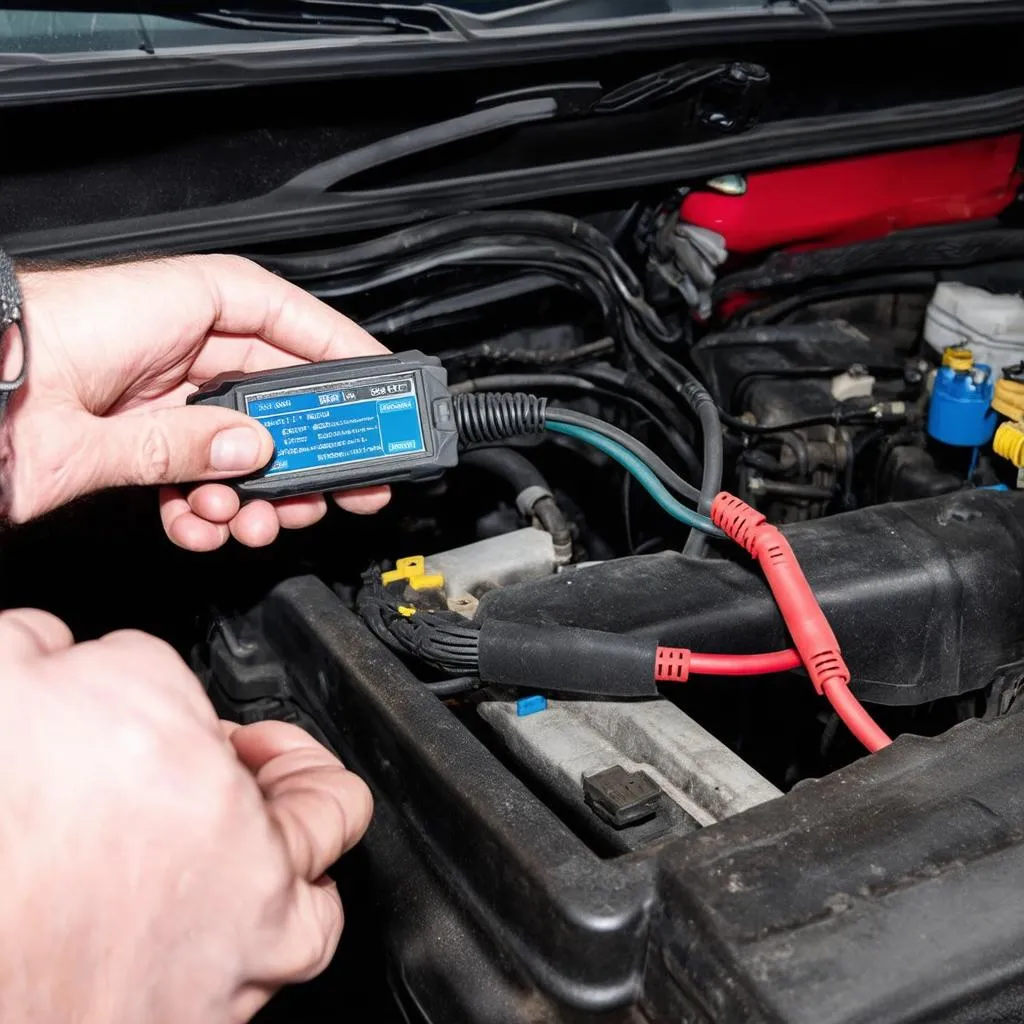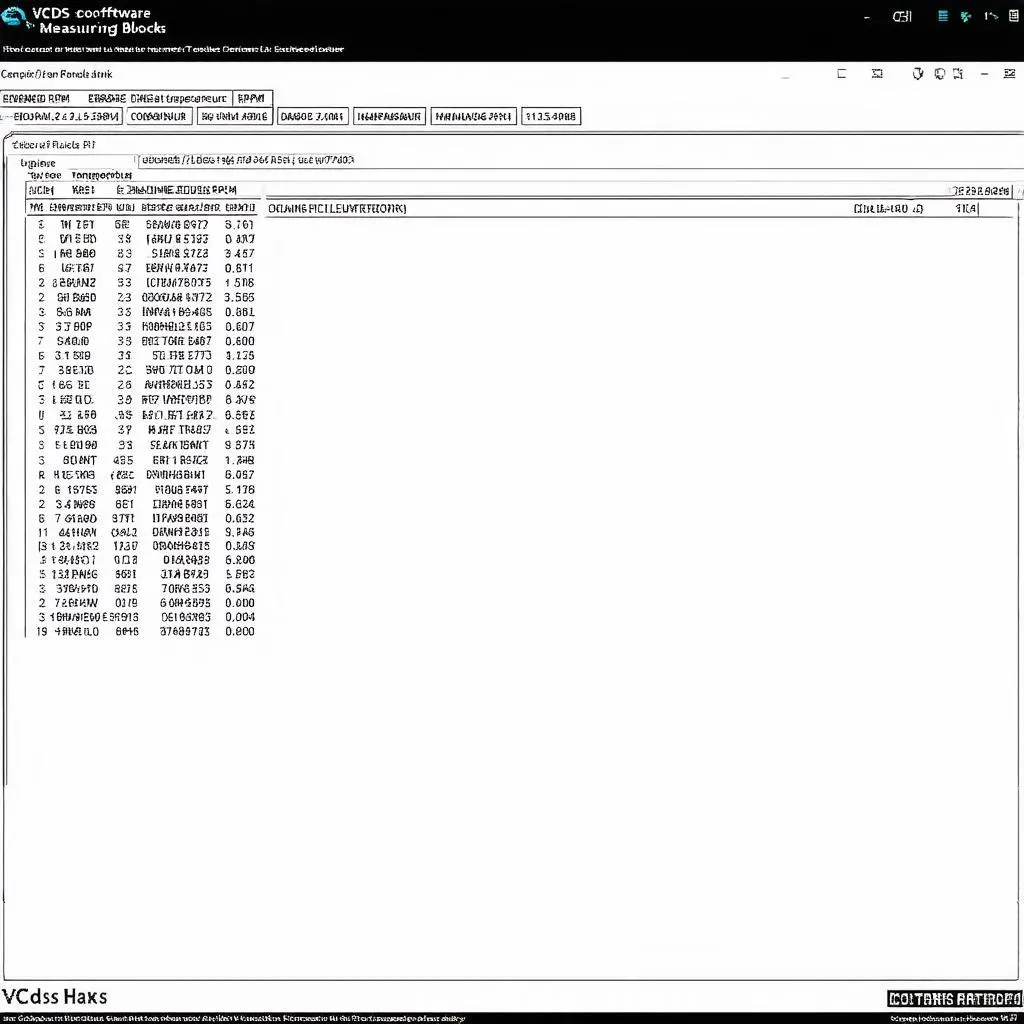When dealing with modern diesel engines, especially those equipped with Diesel Particulate Filters (DPFs), the initial fuel filling procedure is crucial. This process involves more than just topping off the tank; it requires specific adaptations using diagnostic software like VCDS (Vag-Com Diagnostic System) to ensure the vehicle operates correctly. This article delves into the intricacies of Vcds Initial Fuel Filling, its importance, and how it’s performed.
What is VCDS Initial Fuel Filling?
VCDS initial fuel filling is a procedure that informs the Engine Control Unit (ECU) about the amount of fuel present in the tank after a significant change, such as replacing an empty fuel tank or refilling after running out of fuel. This adaptation is essential for accurate fuel level readings, DPF regeneration cycles, and overall engine performance.
Modern diesel engines, particularly those with DPFs, rely on precise fuel level data for various functions. The ECU uses this information to calculate fuel consumption, estimate DPF soot load, and determine the optimal timing for regeneration cycles. Inaccurate fuel level readings can lead to improper DPF regeneration, potentially causing premature filter clogging and costly repairs.
Why is VCDS Initial Fuel Filling Important?
Imagine this scenario: You’ve just had your vehicle’s fuel tank replaced. Without performing a VCDS initial fuel filling, the ECU remains oblivious to the fresh fuel. This discrepancy can result in erroneous fuel gauge readings, leaving you stranded with a full tank indicated as empty.
Furthermore, the ECU might initiate unnecessary DPF regeneration cycles, believing the tank is low on fuel. This can lead to increased fuel consumption, reduced DPF lifespan, and potential engine damage in extreme cases.
“Accurate fuel level data is paramount for the optimal performance and longevity of modern diesel engines,” says automotive electronics specialist Dr. Emily Carter, author of “Advanced Automotive Diagnostics”. “VCDS initial fuel filling ensures the ECU has the correct information to manage critical systems like the DPF effectively.”
How to Perform VCDS Initial Fuel Filling
Performing a VCDS initial fuel filling is a relatively straightforward process that can be done using the following steps:
- Connect VCDS: Connect your VCDS interface to the vehicle’s OBD-II port and launch the VCDS software.
- Access Engine Control Unit: Select the “Engine” control unit from the list of available modules.
- Adaptation: Navigate to the “Adaptation” section within the Engine control unit.
- Select Channel: Locate the channel specifically designated for “Fuel Tank Level” or “Initial Fuel Filling.” The exact channel number may vary depending on the vehicle model.
- Input Value: Enter the precise amount of fuel in liters or gallons that you have filled into the tank.
- Save Adaptation: After entering the value, save the adaptation. The ECU will now recognize the new fuel level and adjust its calculations accordingly.
Note: It’s essential to refer to the specific instructions provided in your vehicle’s repair manual or consult with a qualified automotive technician for the exact adaptation channel and procedure.
Benefits of Proper VCDS Initial Fuel Filling
Properly performing a VCDS initial fuel filling offers several benefits, including:
- Accurate Fuel Gauge Readings: Ensures accurate fuel level readings on the dashboard gauge, preventing unexpected fuel shortages.
- Optimal DPF Regeneration: Allows the ECU to precisely calculate DPF soot load and initiate regeneration cycles at the appropriate time, maximizing filter lifespan and engine efficiency.
- Improved Fuel Economy: Prevents unnecessary DPF regeneration cycles triggered by inaccurate fuel level readings, leading to improved fuel economy.
- Reduced Risk of Engine Issues: By providing accurate fuel level data, the ECU can manage engine parameters effectively, reducing the risk of potential problems associated with incorrect fuel readings.
 VCDS Software Screenshot
VCDS Software Screenshot
FAQs about VCDS Initial Fuel Filling
Q: When do I need to perform a VCDS initial fuel filling?
A: This procedure is necessary after any significant change in the fuel system, such as:
- Replacing the fuel tank
- Running out of fuel completely
- Replacing faulty fuel level sensors
Q: Can I drive my car without performing a VCDS initial fuel filling after refilling the tank?
A: While driving short distances might not immediately cause issues, it’s highly recommended to perform the procedure as soon as possible. Prolonged driving without adaptation can lead to inaccurate fuel gauge readings, unnecessary DPF regeneration cycles, and potential engine problems.
Q: What happens if I don’t perform a VCDS initial fuel filling?
A: Failure to perform the procedure can result in:
- Inaccurate fuel gauge readings
- Premature DPF clogging
- Reduced fuel economy
- Potential engine damage due to incorrect fuel management
 Mechanic Connecting VCDS Interface
Mechanic Connecting VCDS Interface
Conclusion
VCDS initial fuel filling is an essential maintenance procedure for modern diesel engines, particularly those equipped with DPFs. It ensures accurate fuel level readings, optimal DPF regeneration, and overall engine performance. By understanding the importance and procedure of VCDS initial fuel filling, you can contribute to the longevity and efficiency of your vehicle.
For any further assistance or inquiries regarding VCDS initial fuel filling or other automotive diagnostic solutions, don’t hesitate to reach out to CARDIAGTECH, your trusted partner in automotive diagnostics.

